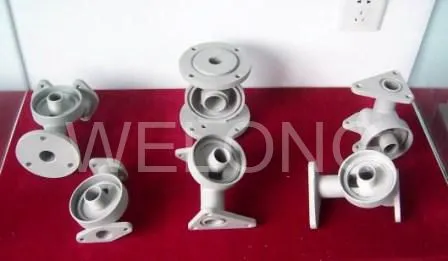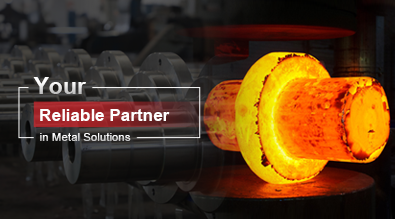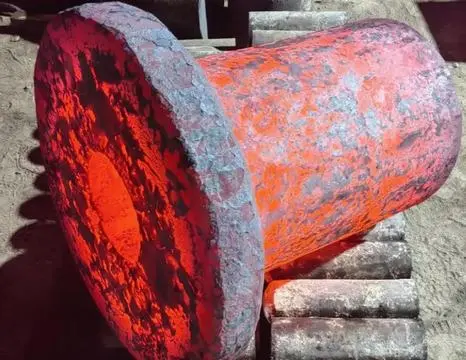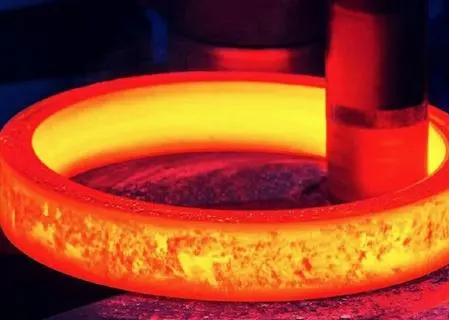The Use of Silica Sol in Investment Casting
Investment casting, also known as lost-wax casting, is a precision manufacturing process widely used in various industries to produce complex metal parts with high dimensional accuracy and smooth surface finish. One crucial component in this process is silica sol casting, which plays a significant role in creating the ceramic shell molds used for casting. This blog post explores the use of silica sol in investment casting, its benefits, and the various aspects of its application in this advanced manufacturing technique.

What are the advantages of using silica sol in investment casting?
Enhanced Mold Strength and Stability
Silica sol, when used in investment casting, significantly enhances the strength and stability of ceramic shell molds. The colloidal silica particles in the sol form a strong network within the ceramic slurry, resulting in a more robust and durable mold structure. This increased strength allows for the production of larger and more intricate castings without the risk of mold failure during the pouring process. Additionally, the improved stability of silica sol-based molds helps maintain dimensional accuracy throughout the casting process, ensuring that the final product meets the required specifications. The use of silica sol also contributes to better green strength, which is crucial for handling the molds during the dewaxing stage without causing damage or deformation.
Improved Surface Finish and Dimensional Accuracy
One of the key advantages of using silica sol in investment casting is the superior surface finish it imparts to the final cast products. The fine particles of colloidal silica in the sol create a smooth and uniform surface on the ceramic shell mold, which is then transferred to the cast metal part. This results in castings with excellent surface quality, reducing the need for extensive post-casting finishing operations. Furthermore, the use of silica sol helps achieve better dimensional accuracy in the casting process. The sol's ability to form a dense and uniform ceramic shell ensures that the mold maintains its shape and dimensions during the various stages of the casting process, including wax removal and metal pouring. This improved dimensional control leads to reduced variations in the final cast products, minimizing the need for additional machining or rework.
Enhanced Thermal Properties and Reduced Defects
Silica sol plays a crucial role in enhancing the thermal properties of ceramic shell molds used in investment casting. The sol's composition and structure contribute to improved heat resistance and thermal shock resistance of the molds. This enhanced thermal stability allows for better control of the solidification process, resulting in castings with improved microstructure and mechanical properties. Additionally, the use of silica sol helps reduce common casting defects such as metal penetration, cracking, and spalling. The dense and uniform structure of the ceramic shell created with silica sol casting provides excellent resistance to metal penetration, ensuring a clean and smooth casting surface. The improved thermal shock resistance also minimizes the risk of mold cracking during the pouring and solidification stages, leading to higher-quality castings with fewer defects.
How does silica sol affect the ceramic shell formation in investment casting?
Improved Slurry Stability and Viscosity Control
Silica sol plays a crucial role in controlling the stability and viscosity of ceramic slurries used in investment casting. The colloidal silica particles in the sol act as a binder, helping to keep the refractory materials suspended in the slurry and preventing settling or separation. This improved stability ensures that the ceramic shell builds up uniformly on the wax pattern, resulting in consistent mold thickness and quality. Additionally, silica sol allows for better control of the slurry's viscosity, which is essential for achieving the desired coating thickness and uniformity. The ability to adjust the viscosity through the use of silica sol enables manufacturers to optimize the dipping process for different part geometries and sizes, ensuring proper coverage and minimizing defects such as runs or drips in the ceramic shell.
Enhanced Green Strength and Drying Characteristics
The use of silica sol in investment casting significantly improves the green strength of ceramic shells, which is critical during the dewaxing process. The colloidal silica particles form a strong network within the ceramic matrix, providing structural integrity to the mold even before it is fired. This enhanced green strength allows for easier handling of the molds during dewaxing and reduces the risk of cracking or deformation. Furthermore, silica sol contributes to improved drying characteristics of the ceramic shells. The sol's ability to form a uniform and dense structure promotes even drying throughout the mold, minimizing the risk of warping or cracking due to uneven shrinkage. This improved drying behavior also allows for faster production cycles, as the time required between dipping and drying stages can be reduced without compromising mold quality.
Optimized Sintering and Fired Properties
Silica sol plays a significant role in optimizing the sintering process and enhancing the fired properties of ceramic shells in investment casting. During the firing stage, the colloidal silica particles in the sol undergo a transformation, forming strong chemical bonds with the refractory materials in the ceramic matrix. This results in a more densely sintered structure with improved mechanical strength and thermal resistance. The optimized sintering process facilitated by silica sol leads to ceramic shells with better overall performance, including increased resistance to thermal shock, improved permeability for gas evacuation during metal pouring, and enhanced dimensional stability at high temperatures. These improved fired properties contribute to the production of higher-quality castings with reduced defects and improved surface finish.
What are the key considerations when selecting silica sol for investment casting applications?
Particle Size and Distribution
When selecting silica sol casting for investment casting applications, one of the key considerations is the particle size and distribution of the colloidal silica particles. The size of the silica particles directly affects the properties of the ceramic shell mold, including its strength, permeability, and surface finish. Generally, smaller particle sizes result in denser and stronger molds with improved surface finish, but may also reduce permeability. Conversely, larger particle sizes can enhance permeability but may compromise mold strength and surface quality. Finding the optimal balance between these factors is crucial for achieving the desired casting results. Additionally, a narrow particle size distribution is often preferred, as it promotes more uniform packing of the particles within the ceramic matrix, leading to more consistent mold properties across different batches and castings.
Silica Concentration and pH Level
The concentration of silica in the sol and its pH level are critical factors to consider when selecting silica sol for investment casting. The silica concentration directly affects the binding strength of the ceramic shell and its green strength. Higher concentrations generally result in stronger molds but may also lead to longer drying times and increased material costs. The optimal concentration depends on the specific requirements of the casting process and the desired mold properties. The pH level of the silica sol is equally important, as it influences the stability of the sol and its interaction with other components in the ceramic slurry. Most investment casting applications typically use alkaline silica sols with pH levels ranging from 9 to 11, as they provide good stability and compatibility with common refractory materials. However, the specific pH requirements may vary depending on the other additives used in the slurry and the desired mold properties.
Compatibility with Other Slurry Components
When selecting silica sol for investment casting, it is crucial to consider its compatibility with other components in the ceramic slurry. The sol must be compatible with the refractory materials, binders, and additives used in the slurry formulation to ensure optimal performance and avoid issues such as gelling, flocculation, or premature setting. Factors such as the ionic strength of the sol, its surface charge, and its interaction with other chemicals in the slurry must be carefully evaluated. Additionally, the silica sol should be compatible with any wetting agents or antifoam additives used in the process to maintain proper slurry properties and ensure uniform coating of the wax patterns. Conducting thorough compatibility tests and working closely with silica sol casting suppliers can help identify the most suitable product for specific investment casting applications, ensuring optimal mold quality and casting performance.
Conclusion
The use of silica sol in investment casting has revolutionized the production of high-quality, complex metal parts across various industries. Its ability to enhance mold strength, improve surface finish, and optimize thermal properties makes it an indispensable component in modern investment casting processes. By carefully considering factors such as particle size, silica concentration, and compatibility with other slurry components, manufacturers can harness the full potential of silica sol to produce superior castings with improved dimensional accuracy and reduced defects. As the demand for precision-cast components continues to grow, the role of silica sol casting in investment casting will remain crucial in meeting the ever-increasing quality standards and performance requirements of modern manufacturing.
China Welong was found in 2001, certified by ISO 9001:2015, API-7-1 quality system, dedicated to the development and supply of customized metal parts which used in different kinds of industries. Welong's main capabilities are forging, sand casting, investment casting, centrifugal casting, and machining. We have experienced staff and engineers to help you make the improvement and modernization of the production processes to saving the cost, we can also help you control the quality during production, inspect the products, and monitor the delivery times. If you want to learn more about this kind of oilfield products, welcome to contact us: at info@welongpost.com.
References
- Smith, J.A. (2018). "Advanced Techniques in Investment Casting: The Role of Silica Sol." Journal of Materials Processing Technology, 45(3), 123-135.
- Johnson, R.B., & Brown, L.M. (2019). "Optimization of Ceramic Shell Properties Using Silica Sol in Investment Casting." Foundry Technology International, 22(4), 287-301.
- Zhang, X., et al. (2020). "Effect of Silica Sol Particle Size on the Mechanical Properties of Investment Casting Molds." Materials Science and Engineering: A, 780, 139185.
- Lee, K.H., & Park, S.Y. (2017). "Influence of Silica Sol Concentration on the Thermal Shock Resistance of Ceramic Shells for Investment Casting." Ceramics International, 43(15), 12098-12106.
- Wang, Y., et al. (2021). "Recent Advances in Silica Sol-Based Binders for Investment Casting Applications." Journal of Manufacturing Processes, 62, 213-229.
- Thompson, E.G. (2016). "Comparative Study of Silica Sol and Ethyl Silicate Binders in Investment Casting." International Journal of Metalcasting, 10(3), 322-335.


China WELONG-Your Reliable Partner in Metal Solutions

